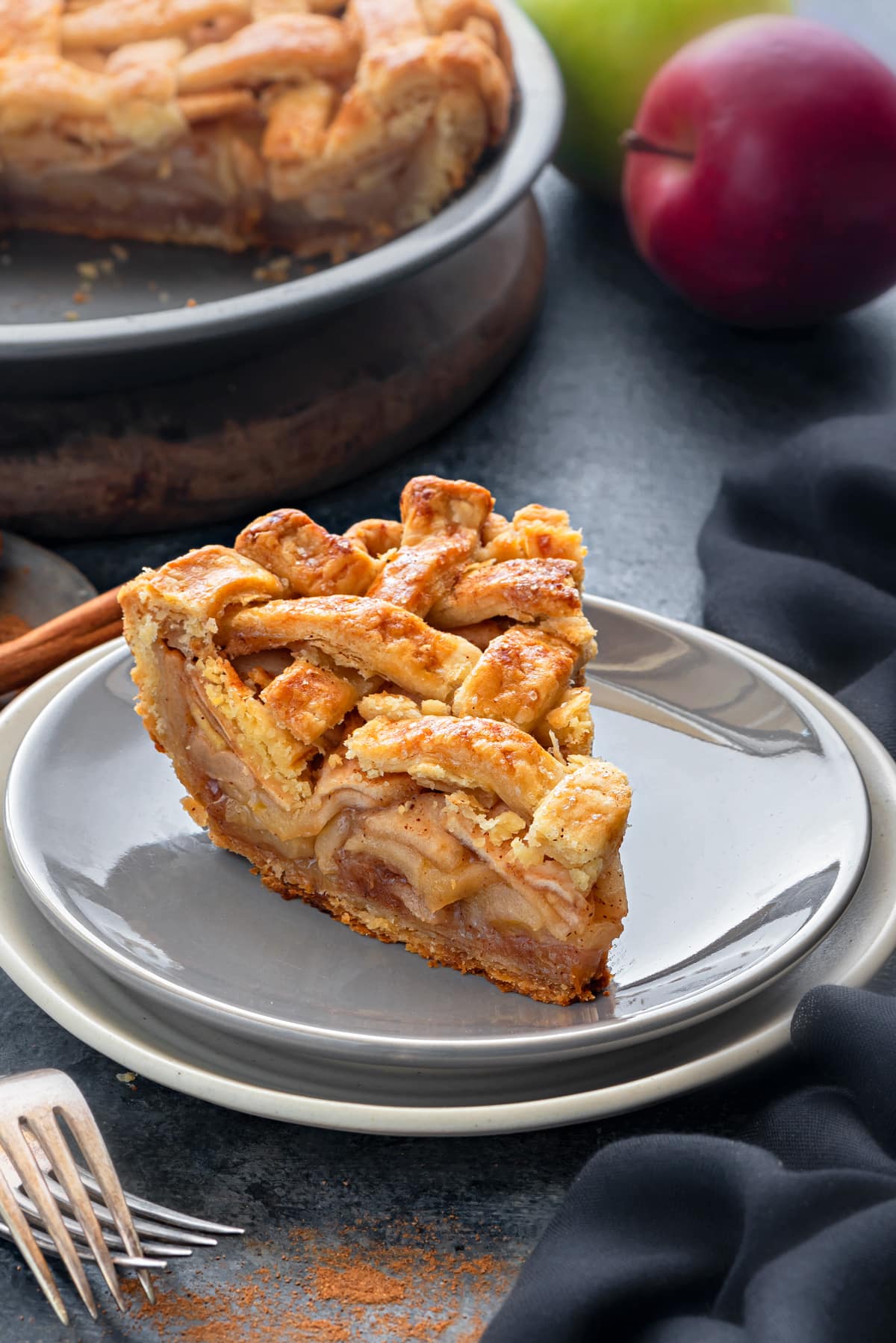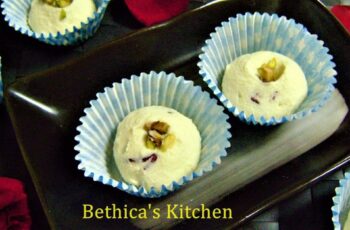
The Enduring Slice: How Apple Pie Became a Legend in a Crust
There are few aromas as universally evocative as that of a baking apple pie. It’s a scent that transcends the kitchen, winding its way through the hallways of memory and nostalgia. It’s the smell of holidays, of a grandmother’s welcome, of autumn evenings settling into a cozy chill. The gentle bubbling of cinnamon-spiced apples beneath a golden, flaky crust is more than just a culinary process; it is the creation of comfort itself. Apple pie is not merely a dessert. It is a cultural touchstone, a vessel for tradition, and, against all historical odds, a symbol of a nation.
The phrase "as American as apple pie" is so deeply ingrained in the cultural lexicon that it feels like an indisputable truth. Yet, the story of apple pie is, much like America itself, an immigrant’s tale. The concept of enclosing fruit in pastry is decidedly European. The first recorded recipe for an apple pie dates back to 1381 England, a far cry from the amber waves of grain. These early pies were a world away from the sweet, tender dessert we know today. Sugar was an exorbitant luxury, so these medieval pies were often unsweetened. The pastry, called a "coffyn," was a thick, utilitarian casing of flour and water, designed not necessarily for eating but as a sturdy, edible container to bake and preserve the filling within.
When colonists from England, the Netherlands, and Sweden crossed the Atlantic, they brought their culinary traditions with them, including the practice of making pies. However, it was in the fertile soil of the New World that the apple pie truly began its transformation. Apples, though not native to North America (crabapples were the only indigenous variety), flourished when their seeds and saplings were imported. The landscape became dotted with orchards, thanks in no small part to pioneers like John Chapman, the real-life figure behind the legend of Johnny Appleseed. While folklore paints him as a whimsical spreader of apple trees for eating, his primary mission was to establish orchards for the production of hard cider, a staple beverage in colonial America.
This proliferation of apples—tart, hardy varieties perfect for baking—created a surplus. The pie, a vestige of their European heritage, became the perfect vehicle for this bountiful harvest. It was a practical way to use apples that might otherwise spoil, and its hearty nature provided sustenance for hardworking families. Slowly, the American apple pie began to distinguish itself from its ancestors. With access to sweeteners from the Caribbean, sugar became a key ingredient. Spices like cinnamon, nutmeg, and allspice, brought in through burgeoning trade routes, infused the filling with the warm, aromatic character we now consider essential. The tough "coffyn" crust softened and enriched with butter and lard, evolving into the tender, flaky masterpiece that shatters at the touch of a fork.
The anatomy of a truly great apple pie is a study in beautiful simplicity and precise chemistry. It’s a symphony where every instrument must be perfectly in tune. It begins, of course, with the crust. The debate between an all-butter crust versus one made with shortening or lard is a passionate one among bakers. Butter provides unparalleled flavor—rich, nutty, and complex. Shortening and lard, on the other hand, create a more tender, melt-in-your-mouth flakiness due to their higher melting points. Many purists swear by a combination of the two, seeking the holy grail of flavor and texture. The secret to any great crust lies in temperature. The butter or fat must be kept ice-cold and worked into the flour just enough to form pea-sized pieces. When the pie hits the heat of the oven, these cold fat pockets melt, releasing steam that pushes the layers of dough apart, creating those coveted, delicate flakes.
Then comes the heart of the matter: the apples. The choice of apple is paramount. A single-variety pie can be delicious, but a blend often yields a more complex and satisfying result. The ideal baking apple must walk a fine line; it needs to be firm enough to hold its shape and not dissolve into mush, yet tender enough to yield softly to the bite. It should also possess a vibrant tartness to balance the sugar. The Granny Smith is the undisputed workhorse of the pie world for this very reason, its bracing acidity and firm flesh making it a reliable choice. However, combining it with a sweeter, more aromatic apple like a Honeycrisp, Braeburn, or Golden Delicious adds layers of flavor and a more interesting texture.
The filling is where the baker’s personality shines through. A shower of cinnamon is non-negotiable, but a whisper of nutmeg can add depth, a pinch of allspice a hint of mystery, and a touch of cardamom a floral, exotic note. A thickener, like flour, cornstarch, or tapioca starch, is crucial to prevent the dreaded "soupy bottom," transforming the apple juices released during baking into a luscious, glossy sauce. A squeeze of lemon juice not only prevents the sliced apples from browning but also brightens the overall flavor, cutting through the sweetness. Finally, a few pats of cold butter dotted over the filling before the top crust is laid is a baker’s secret, adding a final touch of richness that emulsifies the sauce into silky perfection.
Beyond its delicious components, apple pie’s power lies in its symbolism. It became inextricably linked with the idea of American domesticity and prosperity in the 19th and 20th centuries. It represented home, hearth, and the wholesome ideal of the self-sufficient family. During World War II, the connection was solidified. When soldiers were asked by journalists why they were going to war, a common reply was, "For Mom and apple pie." In that simple phrase, the dessert was elevated from a mere food item to a symbol of the very values and way of life they were fighting to protect. It stood for comfort, for normalcy, for everything that was good and right about home.
This cultural weight ensures that apple pie remains a fixture at the most American of gatherings: the Fourth of July picnic, the Thanksgiving feast, the simple family Sunday dinner. It is a dessert that carries with it the stories of generations. Many families have a "secret" recipe, passed down on a flour-dusted, spidery-scripted index card—a recipe that is less about exact measurements and more about feel, memory, and the muscle-memory of love.
While the classic double-crust or lattice-topped pie remains the gold standard, the form is far from static. Regional and modern variations abound, proving its versatility. In New England, it’s traditional to serve a slice of apple pie with a sharp slice of cheddar cheese, the salty tang of the cheese a brilliant counterpoint to the sweet filling. The Dutch have their Appeltaart, a deep-dish cake-like creation with a lattice top. The French boast the elegant Tarte Tatin, with its caramelized apples and upside-down presentation. The Austrian Apfelstrudel features paper-thin layers of dough wrapped around a spiced apple filling. These global cousins remind us that the love of baked apples is a near-universal sentiment.
In the end, the story of apple pie is one of transformation. It’s the story of a humble, practical dish that crossed an ocean, adapted to a new land, and, through a combination of agriculture, history, and cultural sentiment, became an icon. To bake an apple pie is to participate in a ritual. It is to fill your home with an aroma that promises warmth and contentment. To share a slice is to offer more than just sustenance; it is to offer a piece of a shared story, a slice of comfort, a taste of home. And in a world that often feels complex and fast-paced, the simple, honest, and enduring pleasure of a perfect slice of apple pie feels more essential than ever.

The Enduring Slice: How Apple Pie Became a Legend in a Crust pictures collections gallery
The Enduring Slice: How Apple Pie Became a Legend in a Crust is a nice pictures and stock photo for your computer desktop or your smartphone device (ipad, tablet, blackberry, iphone, and other device) and also for your personal use. Free available for desktop wallpaper or additional image collections for your all needs. And was uploaded by at date July 1, 2025. You can download it in your computer by clicking download button to save image... have nice day and have fun guys..
This 1 image in featured post from 0 Photos/images Gallery and awesome picture selections about The Enduring Slice: How Apple Pie Became a Legend in a Crust is available to download. "Download & Save" images/pictures/wallpapers now and this Is one of the post that listed in packed to Category is Foods directory, with image dimension/resolution size is 1200 × 1798 px and size image/picture file is 171 KB with original link post ID is : https://powae.pw/the-enduring-slice-how-apple-pie-became-a-legend-in-a-crust/. Get download/save images in post and gallery, "download" images or "preview" it on a bigger image for spesification sample in Large size (full attachment size) here : [Download & View to Large size]. Just Simple way, in thumbnail or in Gallery. *Click images to view Large Size.We collect this wonderful image from online and choose one of the best for you. Pictures collection that posted here was carefully chosen and published by author after choosing the ones which are best among the others. So, ultimately we make it and here these list of best image for your inspiration and informational reason regarding the The Enduring Slice: How Apple Pie Became a Legend in a Crust as part of blogsite exclusive updates collection. So, take your time and find the best informations and pictures posted here that suitable with your needs and use it for your own collection and personal use. About Image information: Image has been submitted and You are able to give your opinion as evaluations to our web site value.
Don't forget to comment if you interest with this images, you can share this post to social media like as facebook, twitter, google+, pinterest, stumbleupon, and more. just click social media buttons for share this post The Enduring Slice: How Apple Pie Became a Legend in a Crust Now. :)
Thanks for your visit, I hope you happy come to opo wae, wis opo wae, and get what you're looking for. And hope sometimes you will come back again here. All you need to do is help us develop by discussing this The Enduring Slice: How Apple Pie Became a Legend in a Crust if you like it "leave your comment". have fun, Thank you.




